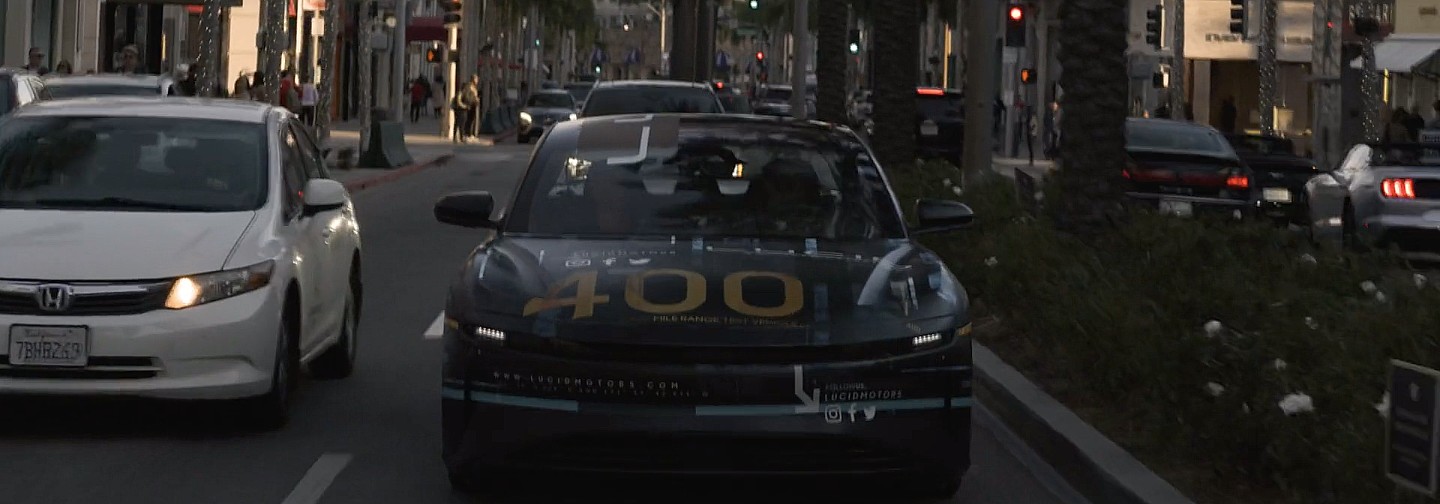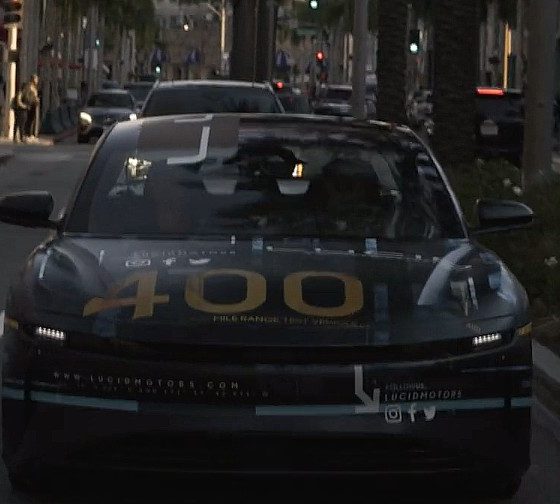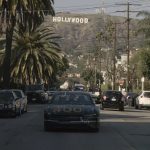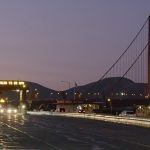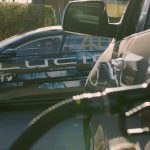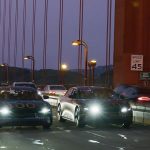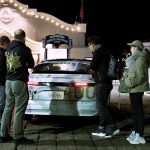American electric car startup Lucid Motors drove its “Lucid Air” prototype from its headquarters in Silicon Valley to Los Angeles and back, an 800-mile journey, on just two charges.
Lucid Motors was established in 2007 and aimed to create high-performance electric vehicles. After unveiling the Lucid Air in December 2016, the company has fine-tuned its first vehicle for the last three-and-a-half years, ensuring it will be able to compete with Tesla’s current industry-leading cars. It plans to begin production of the Air this year. Also, it expects to use its single flagship store located near its Silicon Valley headquarters to initiate a direct-to-consumer sales experience.
The Lucid Air is a dual-motor electric vehicle with 1,000 total horsepower and an estimated top speed of 217 MPH. Beyond performance, the team at Lucid set out to challenge itself on achieving 400 miles on a single charge in long-range mode. Tesla’s Long Range Model S is currently the only vehicle that has an EPA estimated range that nears 400 miles.
The vehicle’s trip was documented by a few members Lucid’s team and released in a new video that recorded the nearly 800-mile journey that consisted of stops for a photoshoot at the Santa Monica Pier, and a few strolls down some of Los Angeles’ most notable streets.
- Credit: Lucid Motors
- Credit: Lucid Motors
- Credit: Lucid Motors
Lucid’s long-range journey would take the vehicle from the company’s headquarters in Newark, California, just West of Fremont, where Tesla’s main production facility is located. After leaving Northern California, the trip took the vehicle through a vast array of elevations, traveling down the iconic California coastline on Pacific Coast Highway 1.
The trip home would bring the vehicle through the Tejon Pass, a stretch of road in both Los Angeles County and Kern County that sits 4,144 feet above sea level. After the car arrived back in Northern California, it was met by Lucid CEO and former Tesla VP of Engineering Peter Rawlinson, and two Air vehicles traveled across the Golden Gate Bridge back to the company’s headquarters.
- Credit: Lucid Motors
- Credit: Lucid Motors
The Lucid Air managed to complete this trip with only two charges, one when beginning the trip and another from an overnight charge after the driver and passenger completed the photoshoot in Santa Monica. The roughly 400 miles per leg trip was completed while utilizing 2170 lithium-ion battery cells from both Samsung SDI and LG Chem, the latter being the same as Tesla uses in its Model 3. The 2170 cells are more energy-dense and more cost-effective than the 18650 battery.
Nevertheless, Lucid’s journey from one end of California to the other has proven the automaker could become a real player in the electric vehicle industry. As many companies who are transitioning to electric vehicles struggle with range in their cars, Lucid has managed to prove that its pre-production Air can travel through the highs and lows of the Golden Gate with its impressive range.
Watch Lucid’s documentation of the “Lucid Air’s” journey through California below.
https://player.vimeo.com/video/402214386

News
Tesla FSD fleet is nearing 7 billion total miles, including 2.5 billion city miles
As can be seen on Tesla’s official FSD webpage, vehicles equipped with the system have now navigated over 6.99 billion miles.

Tesla’s Full Self-Driving (Supervised) fleet is closing in on almost 7 billion total miles driven, as per data posted by the company on its official FSD webpage.
These figures hint at the massive scale of data fueling Tesla’s rapid FSD improvements, which have been quite notable as of late.
FSD mileage milestones
As can be seen on Tesla’s official FSD webpage, vehicles equipped with the system have now navigated over 6.99 billion miles. Tesla owner and avid FSD tester Whole Mars Catalog also shared a screenshot indicating that from the nearly 7 billion miles traveled by the FSD fleet, more than 2.5 billion miles were driven inside cities.
City miles are particularly valuable for complex urban scenarios like unprotected turns, pedestrian interactions, and traffic lights. This is also the difference-maker for FSD, as only complex solutions, such as Waymo’s self-driving taxis, operate similarly on inner-city streets. And even then, incidents such as the San Francisco blackouts have proven challenging for sensor-rich vehicles like Waymos.
Tesla’s data edge
Tesla has a number of advantages in the autonomous vehicle sector, one of which is the size of its fleet and the number of vehicles training FSD on real-world roads. Tesla’s nearly 7 billion FSD miles then allow the company to roll out updates that make its vehicles behave like they are being driven by experienced drivers, even if they are operating on their own.
So notable are Tesla’s improvements to FSD that NVIDIA Director of Robotics Jim Fan, after experiencing FSD v14, noted that the system is the first AI that passes what he described as a “Physical Turing Test.”
“Despite knowing exactly how robot learning works, I still find it magical watching the steering wheel turn by itself. First it feels surreal, next it becomes routine. Then, like the smartphone, taking it away actively hurts. This is how humanity gets rewired and glued to god-like technologies,” Fan wrote in a post on X.
News
Tesla starts showing how FSD will change lives in Europe
Local officials tested the system on narrow country roads and were impressed by FSD’s smooth, human-like driving, with some calling the service a game-changer for everyday life in areas that are far from urban centers.

Tesla has launched Europe’s first public shuttle service using Full Self-Driving (Supervised) in the rural Eifelkreis Bitburg-Prüm region of Germany, demonstrating how the technology can restore independence and mobility for people who struggle with limited transport options.
Local officials tested the system on narrow country roads and were impressed by FSD’s smooth, human-like driving, with some calling the service a game-changer for everyday life in areas that are far from urban centers.
Officials see real impact on rural residents
Arzfeld Mayor Johannes Kuhl and District Administrator Andreas Kruppert personally tested the Tesla shuttle service. This allowed them to see just how well FSD navigated winding lanes and rural roads confidently. Kruppert said, “Autonomous driving sounds like science fiction to many, but we simply see here that it works totally well in rural regions too.” Kuhl, for his part, also noted that FSD “feels like a very experienced driver.”
The pilot complements the area’s “Citizen Bus” program, which provides on-demand rides for elderly residents who can no longer drive themselves. Tesla Europe shared a video of a demonstration of the service, highlighting how FSD gives people their freedom back, even in places where public transport is not as prevalent.
What the Ministry for Economic Affairs and Transport says
Rhineland-Palatinate’s Minister Daniela Schmitt supported the project, praising the collaboration that made this “first of its kind in Europe” possible. As per the ministry, the rural rollout for the service shows FSD’s potential beyond major cities, and it delivers tangible benefits like grocery runs, doctor visits, and social connections for isolated residents.
“Reliable and flexible mobility is especially vital in rural areas. With the launch of a shuttle service using self-driving vehicles (FSD supervised) by Tesla in the Eifelkreis Bitburg-Prüm, an innovative pilot project is now getting underway that complements local community bus services. It is the first project of its kind in Europe.
“The result is a real gain for rural mobility: greater accessibility, more flexibility and tangible benefits for everyday life. A strong signal for innovation, cooperation and future-oriented mobility beyond urban centers,” the ministry wrote in a LinkedIn post.
News
Tesla China quietly posts Robotaxi-related job listing
Tesla China is currently seeking a Low Voltage Electrical Engineer to work on circuit board design for the company’s autonomous vehicles.

Tesla has posted a new job listing in Shanghai explicitly tied to its Robotaxi program, fueling speculation that the company is preparing to launch its dedicated autonomous ride-hailing service in China.
As noted in the listing, Tesla China is currently seeking a Low Voltage Electrical Engineer to work on circuit board design for the company’s autonomous vehicles.
Robotaxi-specific role
The listing, which was shared on social media platform X by industry watcher @tslaming, suggested that Tesla China is looking to fill the role urgently. The job listing itself specifically mentions that the person hired for the role will be working on the Low Voltage Hardware team, which would design the circuit boards that would serve as the nervous system of the Robotaxi.
Key tasks for the role, as indicated in the job listing, include collaboration with PCB layout, firmware, mechanical, program management, and validation teams, among other responsibilities. The role is based in Shanghai.
China Robotaxi launch
China represents a massive potential market for robotaxis, with its dense urban centers and supportive policies in select cities. Tesla has limited permission to roll out FSD in the country, though despite this, its vehicles have been hailed as among the best in the market when it comes to autonomous features. So far, at least, it appears that China supports Tesla’s FSD and Robotaxi rollout.
This was hinted at in November, when Tesla brought the Cybercab to the 8th China International Import Expo (CIIE) in Shanghai, marking the first time that the autonomous two-seater was brought to the Asia-Pacific region. The vehicle, despite not having a release date in China, received a significant amount of interest among the event’s attendees.
